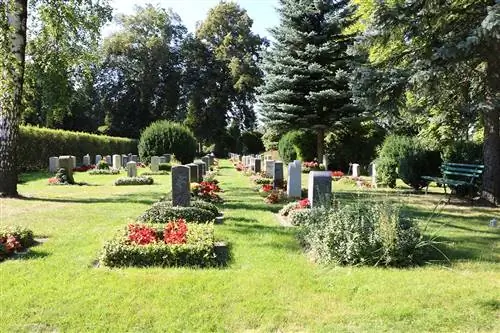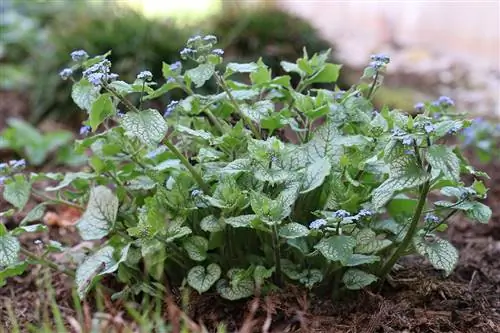- Author admin [email protected].
- Public 2023-12-17 03:39.
- Last modified 2025-01-24 12:45.
Not all insects are pests. The springtails, for example, feed primarily on decayed plant matter, but also on algae or pollen, carrion or are predatory. By eating away everything that is left anyway, they are doing us something good.
Several species of springtail are known to be able to absorb and utilize heavy metals from the soil. This leads to springtails becoming important first colonizers of contaminated soil. They are very useful, for example in waste dumps.
Through targeted food choices, springtails are able to control mineralization processes and thus positively influence plant growth. Springtails can also be useful as mushroom eaters, for example.
However, there are some species of springtail that are harmful, such as the alfalfa flea.
Features of the jumping jumps & interesting facts
- Springtails reach a body size of around 0.2 millimeters to 1 centimeter and mainly live in the humus layer of soil that is not too dry. However, they can also occur in riparian areas or in high mountain soils.
- These animals are wingless, but have a jumping fork that enables them to perform extraordinary jumps. They jump incredibly far, but largely uncontrollably, for example when there is impending danger through contact.
- Springtails also have mouthparts that lie in a pocket in the mouth and only become visible when in use.
- The population of these animals is incredibly high; after mites, they are the most common arthropods in the soil.
A he althy soil “lives”
This overview has probably given you an idea that soil populated by springtails does not provide your plants with the worst growing conditions. That's exactly how it is, or more precisely, your plants are dependent on the fact that there is a lot of “life” in the soil. It is the countless bacteria in the soil that ensure that your plants can thrive by stabilizing the soil structure, making the soil capable of storing water and guaranteeing a supply of nutrients. The bacteria, together with fungi, ensure that organic residues are broken down and processed into nutrients that can be absorbed by the plants and are urgently needed for them. These smallest soil creatures make up around three quarters of the living mass in the soil, and they in turn serve as food for the larger ones, single-celled organisms, springtails and woodlice. Up to 400,000 springtails do their important work in the top 30 cm of a square meter of he althy garden soil.
The springtails live primarily in the humus layers of all reasonably moist soils, where they work their way down to a depth of several meters, or process rotting plant material near the surface and thus convert it into humus. They are found pretty much everywhere: in sand dunes and deserts, in snowy patches and on shores and in rainforests; There are species that live on tree bark and those that prefer water surfaces; springtails can be found in the nests of ants and on glaciers. The amazing ability of some species to process pollutants has already been mentioned above, but overall springtails are an important link in the chain of soil-working creatures.
How sensitively the balance of he althy soil is structured can be seen from the fact that there are always exactly as many springtails gathered on a piece of soil as are optimal for tilling the soil. The amount of springtails adapts to the nutrients, moisture, lighting conditions, pH value and the shape of the humus, so every soil gets the number of springtails it needs. If necessary, masses can be observed that are concentrated at a certain point, e.g. B. in the event of a fungal infection. The springtails also help to understand why monocultures and “bare” garden soils are so harmful: When springtails cannot find decaying organic matter that is their natural food in a “clinically clean” culture environment, they have to find something else to eat then the roots of the lonely growing plants
The springtails are amazing little animals
A closer look at the springtails is interesting not only because they are so useful, they have also developed an astonishing inventiveness in their evolution: springtails that live above ground are darkly pigmented, partially patterned and heavily hairy, only in the ground Living springtails are slightly colored or transparent, and they also develop fewer eyes. The body of the springtails is water-repellent on the surface; they are covered with a protective layer of wax called a cuticle, through which they can also breathe. This cuticle also enables the animals to move on the surface of the water and with its help they survive ground flooding in an air bubble. The springtails get their name from their three-part jumping fork, which can be tensioned in a kind of body-specific hook system and transports the springtail out of any danger with the bold jump mentioned above. All springtails also have a body part called the ventral tube, with which they can cling to and move on any smooth surface, even vertically.
Springtails are extremely tough: they survive floating on the sea for two weeks, during which time they can be carried several hundred kilometers. This is probably how they brought life to the volcanic island of Surtsey (in the Atlantic Ocean), which was sterile when it was formed. Arctic springtails can survive frozen at minus 20 degrees for over 4 years.
Through all of these amazing abilities, the springtails have managed to rank among the oldest land-living animals on our planet; springtail fossils that are 400 million years old have been found. Isn't it always amazing what diversity and differentiation our immediate environment reveals when you take a closer look?






